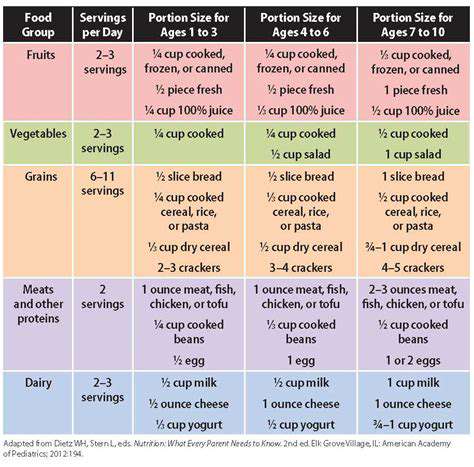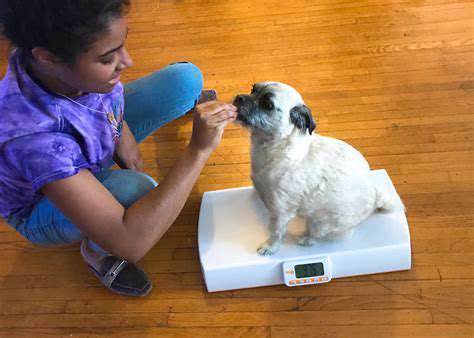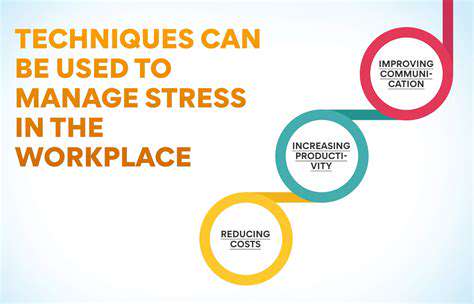Disaster Preparedness for Pet Owners
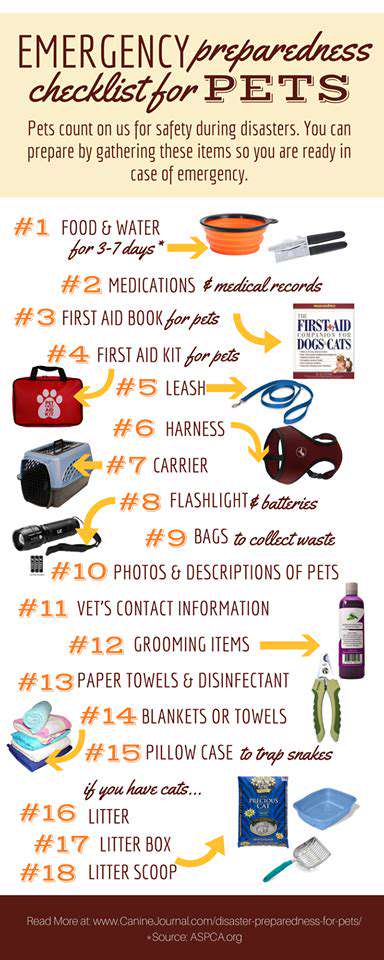
Creating a Safe Space for Your Pet
Understanding Your Pet's Needs
Creating a safe space for your pet during a disaster isn't just about providing shelter; it's about recognizing their unique needs and anxieties. Animals, unlike humans, can't articulate their fears or discomfort. Understanding their typical behaviors, such as seeking comfort in familiar places or exhibiting signs of stress like panting or restlessness, is crucial. Observing their reactions to loud noises, unfamiliar environments, and separation from you can help you anticipate potential issues and plan accordingly.
Knowing your pet's baseline personality is also essential. A normally outgoing dog might become withdrawn and fearful during a crisis, while a normally timid cat might exhibit aggression. Familiarize yourself with these potential behavioral changes so you can identify signs of distress and react appropriately.
Choosing the Right Safe Space
Your pet's safe space should be a designated, quiet, and comfortable area within your home. It should be easily accessible and away from high-traffic areas where the commotion of a disaster might be amplified. Consider factors like your pet's size and temperament when selecting a location. A small dog might find a cozy crate or a confined area with blankets comforting, whereas a larger dog might prefer a larger, well-ventilated space.
The space should be well-lit and contain familiar items like their bed, toys, and favorite blankets. These familiar items provide a sense of security and comfort, which is vital for reducing anxiety during stressful situations.
Preparing Essential Supplies
Assembling a pet disaster preparedness kit is just as important as preparing for yourself. Include essentials like food, water, medications, and any necessary medical records. Calculate the daily needs of your pet and ensure you have enough supplies for at least a week, accounting for potential delays in receiving aid. A first-aid kit specifically designed for animals should also be included, along with any necessary medications and a copy of their medical records.
Consider the size of your pet and the type of food they consume. Having enough food and water readily available is critical to maintaining their health and well-being during a disaster. Don't forget to include bowls and any necessary feeding utensils. If your pet has a special diet, ensure you have enough of the appropriate food available.
Creating a Secure Escape Plan
A well-defined escape plan for your pet is crucial for ensuring their safety during a disaster. This includes identifying evacuation routes, gathering necessary supplies, and familiarizing your pet with the designated safe space and evacuation procedures. If possible, designate a specific person to care for your pet during an emergency, ensuring they know the plan and have access to the necessary supplies. This helps manage the stress of the situation for both you and your pet.
Make sure your pet's collar or harness has an easily visible identification tag with their name, your contact information, and any other important details. This is essential for reuniting with your pet if you're separated during an evacuation. Consider microchipping your pet as an additional layer of security.
Communicating Your Plan
Sharing your pet disaster preparedness plan with your household members, especially those who might be responsible for caring for your pet during an emergency, is essential. This ensures everyone is aware of the plan, the location of the supplies, and the evacuation procedures. Familiarizing them with your pet's needs and typical behaviors will also help them provide the best possible care.
Communicating your plan to local authorities, such as emergency responders and animal shelters, is equally important. Providing them with your pet's specific needs and any medical conditions will allow for a faster and more effective response in case of an emergency.
Practicing Disaster Drills
Regularly practicing disaster drills with your pet helps familiarize them with the procedures and builds their confidence. This includes practicing the escape plan, familiarizing them with the safe space, and ensuring they're comfortable with the emergency supplies. These drills will help alleviate anxiety and reduce fear during an actual emergency.
These exercises are vital for your pet's well-being and should be treated as seriously as any other safety preparation. By practicing regularly, you can ensure that your pet is prepared and less likely to panic during a disaster.
Evacuation Procedures and Transportation
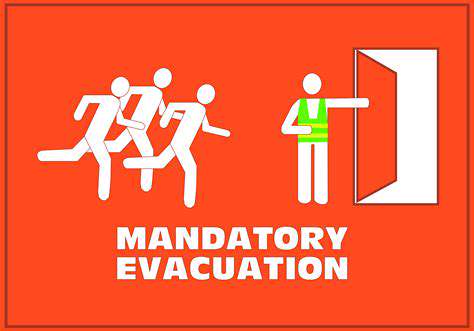
Evacuation Routes and Assembly Points
Understanding the designated evacuation routes and assembly points is crucial for a swift and safe evacuation. These pre-determined pathways are meticulously planned to minimize congestion and ensure a smooth flow of individuals to a safe location. Familiarizing yourself with the evacuation map for your building or area is essential and should be done prior to any emergency. Knowing where to go in an emergency can save valuable time and reduce panic.
Each building or area will have specific evacuation routes and assembly points. These locations are chosen based on factors such as proximity to safe zones, accessibility, and the ability to accommodate a large number of people. Pay attention to signage and instructions provided by emergency personnel to ensure you follow the correct route and reach the designated assembly point.
Transportation Considerations During Evacuation
Transportation plays a significant role in evacuation procedures, especially for individuals with mobility limitations or those requiring specialized care. Having a plan for transporting vulnerable populations during an emergency is vital to ensure their safety and well-being. Designated vehicles and personnel must be available and prepared to transport individuals who need assistance. This includes those using wheelchairs, walkers, or other mobility devices, as well as individuals with medical conditions that require special care.
Specific consideration must be given to the transportation needs of individuals with mobility limitations or those requiring specialized care. Proper coordination between emergency personnel and transportation services is vital for a successful evacuation. This includes having pre-arranged plans for transportation, communication protocols, and ensuring that the chosen vehicles are equipped to handle the specific needs of those being evacuated. This preparation is critical to successful evacuation.
Emergency Communication and Coordination
Clear and concise communication channels are essential during an evacuation. Effective communication ensures everyone understands the situation, follows instructions, and reaches the designated assembly point safely. A designated communication system should be in place to relay important information to all individuals involved in the evacuation process.
Coordination between different emergency response teams and organizations is critical during an evacuation. This includes coordination between building management, emergency services, and transportation providers. Having a pre-arranged plan for communication and collaboration ensures a seamless and efficient evacuation process.
Post-Evacuation Procedures and Support
Post-evacuation procedures are equally important as pre- and during-evacuation procedures. These procedures focus on ensuring the safety and well-being of all evacuated individuals and facilitating their return to normal activities, once the danger has passed. This includes providing necessary assistance and support for those affected by the emergency.
Establishing a clear process for accounting for all evacuated individuals is vital in a post-evacuation scenario. This ensures that no one is left behind and that everyone is accounted for. This can include having a central point of contact for reporting individuals who have been evacuated and accounting for those who require specialized care.
Pet-Specific Disaster Scenarios

Flooding
Flooding is a significant threat to pets, especially those who live outdoors or in low-lying areas. Rapid rising water can trap animals, making them vulnerable to hypothermia, exhaustion, and drowning. Owners must be prepared to evacuate their pets quickly and safely, ensuring they have appropriate identification tags and carriers readily available. Knowing local evacuation routes and shelters that accept animals is crucial.
Flooding can also contaminate water sources, making it unsafe for pets to drink. Providing clean, bottled water is essential during a flood. Moreover, floodwaters often contain debris and chemicals that can be harmful to animals, so avoid letting them come into contact with floodwaters.
Earthquake
Earthquakes can cause significant damage to homes and yards, creating hazardous environments for pets. During an earthquake, it is crucial to keep your pets in a secure location and avoid taking them outside immediately after the shaking stops. This is because aftershocks and collapsed structures can pose new dangers. Pet carriers should be readily available for safe transport during and after the earthquake.
Preparing a pet emergency kit with food, water, medications, and essential supplies is vital. This kit should also include identification tags, proof of vaccination, and a copy of the pet's medical records. These supplies can be of significant use in the days following the earthquake.
Wildfire
Wildfires are devastating natural disasters that can quickly overwhelm pets. Smoke inhalation and burns are significant dangers for animals. If a wildfire is imminent, prioritize evacuation to a safe location with your pets. Animals may panic and run, potentially becoming separated from their owners.
Having a plan for evacuating pets is crucial. Ensure your pet has the appropriate identification tags and carriers readily available for safe transport. Providing clean water and keeping pets calm during the evacuation process is paramount. Also, consider the potential for displacement and the need for temporary housing for your pets and yourself.
Hurricane
Hurricanes bring strong winds, heavy rain, and potential storm surges, posing significant threats to pets. Strong winds can easily blow away unsecured pets, leading to injuries or even death. Heavy rain can cause flash floods that can trap and drown animals. Storm surges can also inundate areas, making it difficult to access your pet.
Ensuring your pet has a secure location indoors during a hurricane is crucial. Consider a pet-safe room or area in your home. Providing your pets with plenty of fresh water is important. Keep your pets indoors and away from windows and doors to avoid injuries from flying debris.
Severe Weather
Severe weather events, such as thunderstorms, tornadoes, and blizzards, can pose significant risks to pets. Thunderstorms can cause anxiety and fear in animals, leading to destructive behaviors. Tornadoes can cause significant damage and injuries. Blizzards can lead to exposure and hypothermia.
Ensure your pets have a safe indoor space during severe weather. Keep them away from windows and doors to prevent them from escaping. Provide plenty of food and water. If necessary, take your pet to a safe shelter or a friend or family member's house.
Power Outage
Power outages can disrupt the normal routines of pets and owners. Animals may experience stress and anxiety, especially if they rely on electricity-powered heating or cooling systems. Maintaining a calm and reassuring atmosphere for your pet is key. Providing access to food, water, and medications is essential during a power outage. Pet-specific emergency supplies should be part of your home emergency kit.
Consider backup power sources, such as portable generators, for emergency situations. Ensure your pets have sufficient food and water supplies to last for several days. Preparing for a power outage can ease both your and your pet's anxieties during this challenging time.
Read more about Disaster Preparedness for Pet Owners
Hot Recommendations
- Customized Sleep Schedules: AI Driven for Sustainable Rest
- Crafting a Personalized Productivity Plan for Mental Clarity
- Sustainable Self Compassion: Cultivating Kindness Towards Your Mind
- Sustainable Productivity Hacks for the Busy Professional
- Sustainable Wellness for Parents: Balancing Family and Self Care
- Data Informed Self Care: Designing Your Personalized Wellness Strategy
- Sustainable Wellness for a Purpose Driven Life
- AI Assisted Mindfulness: Personalized Meditations for Deeper Practice
- Building Inclusive Mental Health Services: Key Initiatives
- AI Powered Self Care: Customizing Your Routine for Maximum Impact

